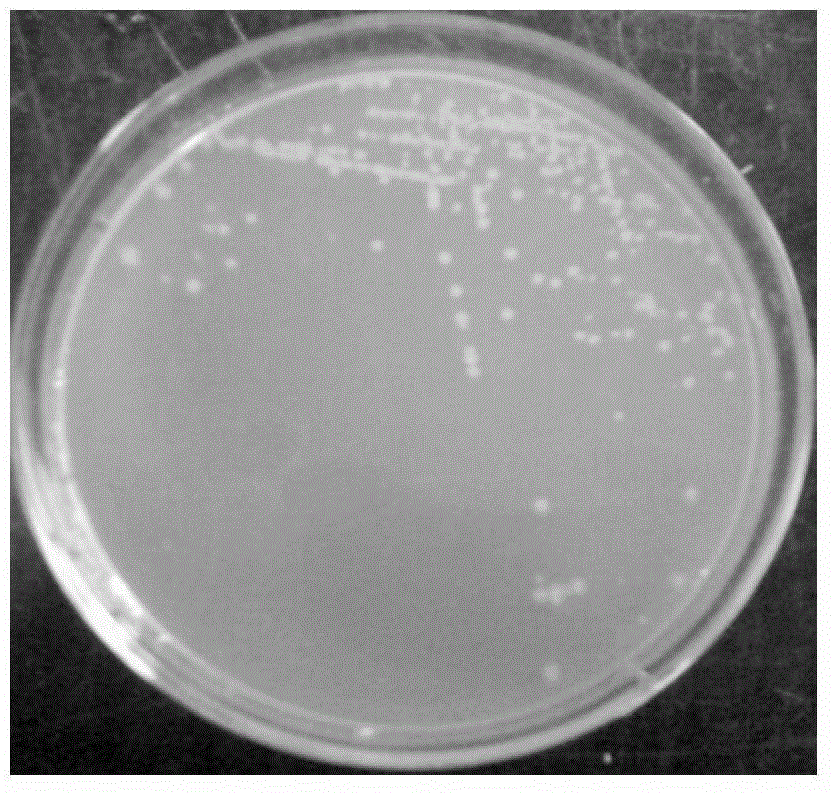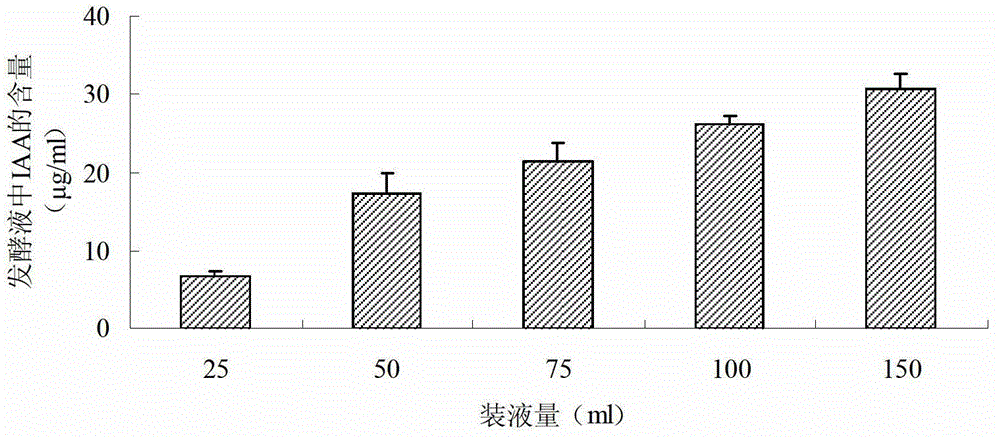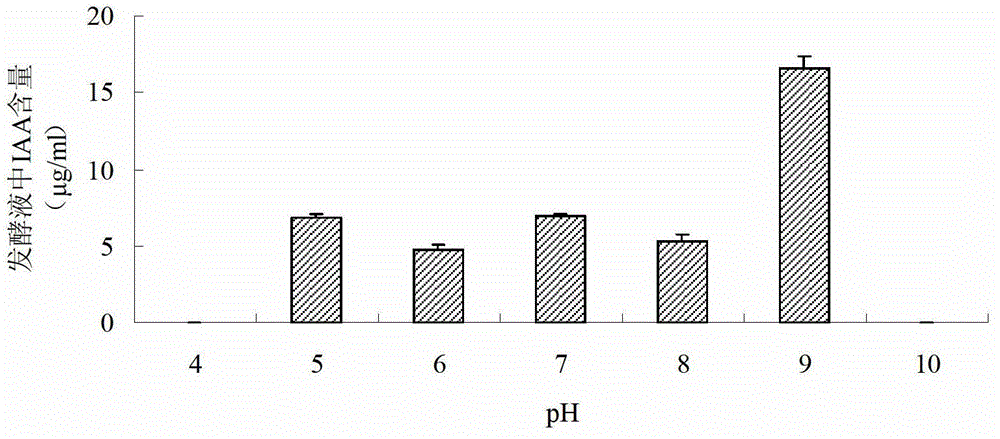Bacillus amyloliquefaciens and application thereof
A technology of amylolytic bacillus and bacillus, applied in the field of agricultural microorganisms, can solve problems such as low soil nutrients, low crop yield, and saline-alkali hazards, and achieve the effects of increasing soil available potassium content, promoting absorption, and improving utilization rate
- Summary
- Abstract
- Description
- Claims
- Application Information
AI Technical Summary
Problems solved by technology
Method used
Image
Examples
Embodiment 1
[0041] First prepare the following three media.
[0042] LB medium: peptone 10g, yeast extract 5g, sodium chloride 10g, agar 20g, distilled water 1000ml, pH7.0-7.2, sterilized at 121°C for 20min.
[0043] LB liquid medium: without agar, other conditions are the same as above.
[0044] Liquid potassium-dissolving bacterial culture medium: 10.0g sucrose, 0.5g yeast extract, (NH 4 ) 2 SO 4 1.0g, Na 2 HPO 4 2.0g, MgSO 4 ·7H 2 O0.5g, CaCO 3 1.0g, 1.0g potassium feldspar powder, 1000mL distilled water, sterilized at 121°C for 20min.
[0045] Nitrogen fixation capacity using Ashby nitrogen-free medium: mannitol 10g, KH 2 PO 4 0.2g, MgSO 4 0.2g, NaCl 0.2g, K 2 SO 4 0.3g, CaCO 3 5g, distilled water 1000mL, Agar 15g, sterilized at 121°C for 20min.
[0046]Inorganic salt medium: ammonium sulfate 2.0g; sodium dihydrogen phosphate 0.5g; dipotassium hydrogen phosphate 0.5g; magnesium sulfate heptahydrate 0.2g; calcium chloride dihydrate 0.1g, distilled water 1000mL, pH7...
Embodiment 2
[0056] Aerobic test
[0057] Pour the sterilized LB medium into 3 sterilized test tubes, at about 2 / 3, on the aseptic operating table, use the inoculation needle to pick up the strain JX1 (CGMCC No.5624) cultured on the slant, Puncture into the above medium (must pierce to the bottom of the tube). Cultivate at 30°C, and observe the results in 3 days to 7 days respectively. Those that grow on the surface of the agar column are aerobic bacteria, and those that grow along the puncture line are anaerobic or facultative anaerobic bacteria. The test results showed that the colonies of the strain JX1 (CGMCC No.5624) grew along the surface of the agar column, and there were also colonies in the puncture line, which was facultatively anaerobic.
[0058] Determination of catalase
[0059] Put 1 drop of 3% HO on a clean slide 2 o 2 , take 1 ring of LB slant culture of strain JX1 (CGMCC No.5624) cultivated for 18~24h, and in H 2 o 2 Smear in the middle, if bubbles are produced, it ...
Embodiment 3
[0085]In order to further verify the indole acetic acid production ability and optimal conditions of the rhizosphere growth-promoting bacteria JX1 (CGMCC No.5624) obtained in Example 1, the following explores the indole acetic acid for different pH, liquid volume, different carbon sources, and different nitrogen sources. Influence of indoleacetic acid production.
[0086] Put 25ml, 50ml, 75ml, 100ml, 150ml of LB liquid medium containing L-tryptophan (100mg / L) into a 250ml Erlenmeyer flask, and inoculate it in the logarithmic growth phase at 1% (v / v) inoculum After JX1 (CGMCC No.5624), put it at 30℃, 180r.min -1 Cultivate on a shaking table for 24 hours, and measure the amount of IAA produced by a quantitative method. The result is as figure 2 As shown, because the strain JX1 (CGMCC No.5624) is a facultative anaerobic metabolism, the aeration rate affects the efficiency of the strain to produce IAA. When the liquid volume is 150mL, the strain produces the most IAA, and then ...
PUM
 Login to View More
Login to View More Abstract
Description
Claims
Application Information
 Login to View More
Login to View More - Generate Ideas
- Intellectual Property
- Life Sciences
- Materials
- Tech Scout
- Unparalleled Data Quality
- Higher Quality Content
- 60% Fewer Hallucinations
Browse by: Latest US Patents, China's latest patents, Technical Efficacy Thesaurus, Application Domain, Technology Topic, Popular Technical Reports.
© 2025 PatSnap. All rights reserved.Legal|Privacy policy|Modern Slavery Act Transparency Statement|Sitemap|About US| Contact US: help@patsnap.com



